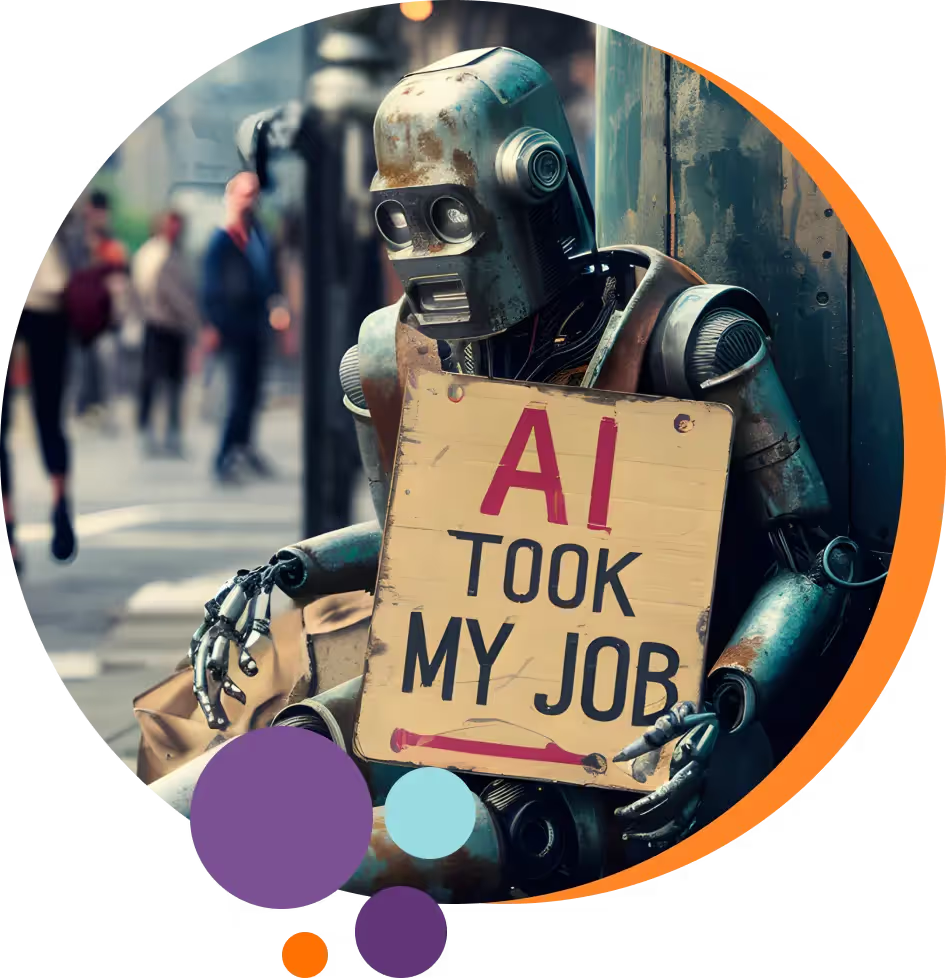So let's check out the statistics showing how many job seekers are out there!
1- "32% of workers between the ages of 25 and 44 are considering changing careers, and 29% actually have, according to an EdX poll!" (1)
This statistic helps us see that the average number of Millenials considering or making a career change is almost one in three. Statistical proof that you're not alone when seeking out the type of career that you want!
2- "Gen Zers, working parents, and employees who have been with their company for less than five years are the most likely to switch jobs in early 2023." (2)
If you fall into one of the above categories, you are more likely to be looking for a career change now! Check out our career change blog at Unmudl if you're unsure where to start.
3- "Globally, the share of [LinkedIn] members changing [job] roles was up by 25% in October 2021, compared with... October 2019" (3)
If you want to change careers, job change is not only normal; it's an everyday function of the overall workforce! Many individuals are making a career switch successfully, and with the right professional skills, you can too!
It's More Than Okay to Change Jobs
If you're worried you're being unloyal to your employer by seeking a change, stress no more! Read on for the statistics that prove job changing is the norm.
4- "The average person changes jobs 12 times in their lifetime, according to the latest available public survey data... The average employee stays with their employer for 4.3 years as of January 2022." (4)
Thebalancemoney.com reports that the average worker changes employment up to 15 times during their career!
With such a short median tenure with each current employer, job change is the new normal. So if you're ready to step out of a current career and make new career choices, there has never been a better time!
5- According to the GOBankingRates 2022 Year in Review survey, nearly 20% of respondents plan to pursue a new full-time job or career in 2023. And nearly 14% said they plan to find a new side gig or part-time work. (5)
This statistic goes to show that when it comes to job change and career shifts, there are plenty of options. You're in good company whether pursuing a new full-time job or side gig. Now is the time to make your move.
Check out our working learner resources at Unmudl to learn more about making a successful career change! Or find all the steps to a successful career change in our Ultimate Guide to Career Change.
Reasons for Job Change
People make career changes for many reasons, including boredom, long hours, bad pay, difficult co-workers or boss, or lack of promotion. Valid reasons to change jobs could come from almost any struggle or even a simple desire to improve your life!
6- "Perks like better pay (34%), being able to switch schedules (34%), and the opportunity for careers that weren’t around in their younger years (34%) encourage... the switch to a new sector." (6)
We all want perks! And the only way to get them is by taking action in your career journey until you get what you want. Check out the next statistic if you want to know why others are changing jobs.
7- "The top three factors for searching for a job were a change in career interests, the need for higher pay, and the search for better benefits." (7)
So, interest, money, and benefits are the three most common motivations many pursue job change.
In the past, a person's lifetime might include one job that eventually brought a retirement pension. But with the average job tenure down to around four years, both employers and employees know that regular job changes are here to stay.
Some employers are getting savvy about retaining their workforce by investing in their employees. One way to do this is by offering the benefits and pay that employees desire, along with furthering employees' educational goals.
If you want to increase your salary or switch gears to a new field, you can make it happen with enough dedication and motivation. Start to further your educational growth at Unmudl with our online on-demand courses that take you to the next level!
.jpeg)
Is Upskilling Necessary for Career Growth?
Next, let's look at statistics about how to grow into a career or job change.
8- The average American is willing to put themselves through two years of education to make a career switch. Some respondents are willing to spend even longer upskilling: nearly one-quarter (24%) would be willing to do more than three years of training if it opened more doors in their career search. (8)
Often, your employer may help you get the training you need if you want to stay but level up in the world!
When employers invest in their workforce with educational and advancement opportunities, they retain their employees longer! Isn't it nice to hear about employees and employers both benefiting?
9- "Businesses that offer their employees growth paths and professional development opportunities — including upskilling when required — can increase employee retention and satisfaction." (9)
If you're switching careers for more money or flexibility, your current employer may be open to helping you gain the skill set you need to move up the career ladder.
Whether you're seeking analytical skills or need more training for service occupations, your career options explode with learning new skills! Learn new skills while staying in your current position with our courses, especially for worker learners!
10- A survey of 2,000 adults finds that while 33 percent of respondents are likely to switch jobs within the same sector, 26 percent of employees are looking to change careers entirely. (10)
A hiring manager wants to know that your career choice is more than a whim. Gaining a certificate in a new field or making a life change that shows your dedication to a career change can help you stand out from the crowd!
You can find excellent options for earning a certificate or other top-notch educational distinctions with our career-changing network at Unmudl.
You're going to need to upskill anyway to stay competitive according to the next statistic!
11- "LinkedIn members’ skills for the same occupation changed by about 25% from 2015 to 2021. At this pace, we expect members’ skills will change by about 40% by 2025" (11)
So go ahead and learn more in your chosen field and upskill your life! Build transferable skills to get ahead of the crowd!

.webp)


















.webp)
.jpeg)
.webp)

.webp)
